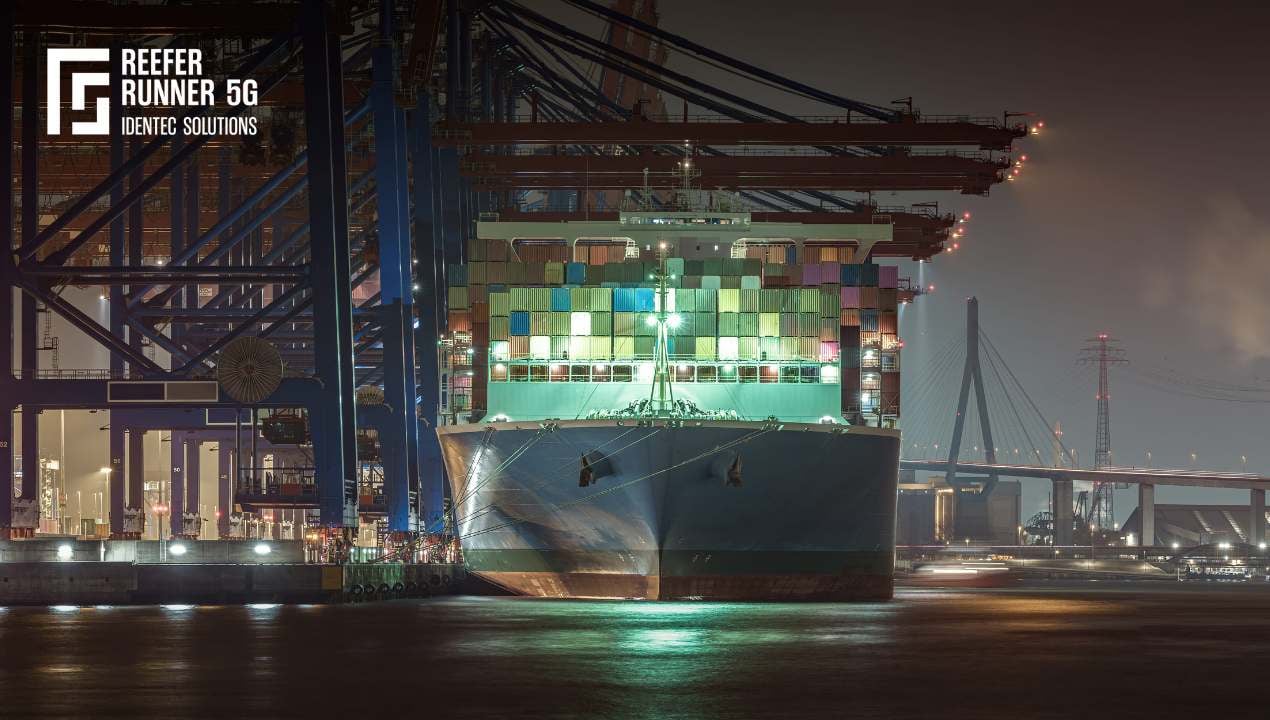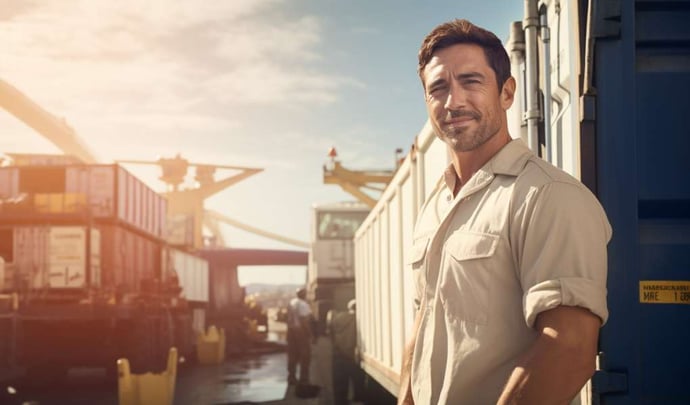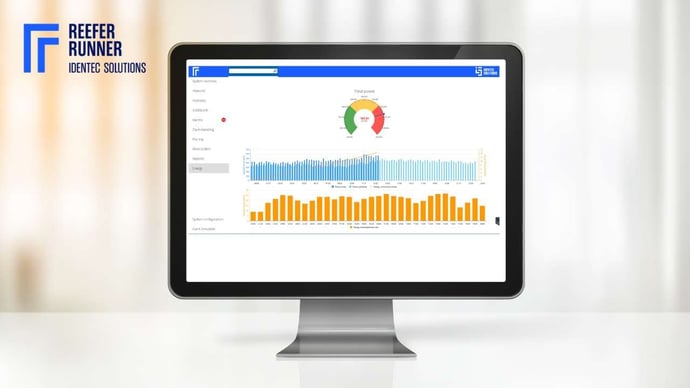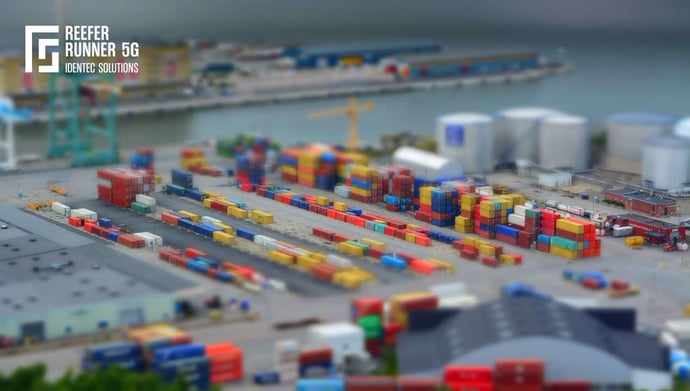Cold Chain Container: Navigating the Frozen Highway
| Written by Mark Buzinkay
From the sizzling summer barbecues stocked with fresh produce to the critical vaccines administered in the depths of winter, the robust cold chain brings these products from their point of origin to our doorsteps, all the while maintaining their optimal temperatures.
In this comprehensive exploration, we will journey into the heart of the cold chain. We will chart the typical transport routes, take an inside look at the cold chain containers, unveil their multifaceted functions, and explore the diverse range of container types designed for specific temperature-sensitive goods.
Stay tuned, and let's dive into the chilling yet fascinating world of the cold chain.

No video selected
Select a video type in the sidebar.
Cold Chain Container or the state of the global economy
In an ever more interconnected global economy, a hidden and often overlooked network exists, ensuring seamless trade and consumption. This system is the cold chain, a temperature-controlled supply network indispensable in the handling, storing, and transporting of temperature-sensitive goods. Today, the cold chain is increasingly crucial in industries ranging from food and beverages to pharmaceuticals, with its importance further accentuated amid the global pandemic.
According to the Global Cold Chain Alliance (GCCA), the global cold chain market was valued at $218 billion in 2022 and is projected to reach $340 billion by 2025. These figures attest to the sector's substantial economic impact and its vital role in international commerce.
One of the primary beneficiaries of the cold chain is the food industry. With the Food and Agriculture Organization (FAO) estimating that around 14% of the world's food is lost post-harvest to retail, the cold chain has become a vital tool in curbing this waste and securing food supplies.
Furthermore, the cold chain serves a pivotal role in the pharmaceutical industry. With vaccines, biopharmaceuticals, and other temperature-sensitive medicinal products, maintaining product efficacy is of utmost importance. The global COVID-19 vaccination effort has demonstrated the value of robust cold chain logistics.
As we continue to face unprecedented challenges such as the pandemic and climate change, the importance of the cold chain will continue to rise, reinforcing its integral role in our lives. The increasing reliance on the cold chain underscores the necessity for further investment and innovation in this sector to meet the growing global demand.
Cold Chain Container: Tracing the route
Delving into the world of cold chain logistics, a crucial element stands out – the cold chain container. This specialized shipping unit, equipped with temperature control mechanisms, forms the backbone of transporting temperature-sensitive goods across various transport modes. But what exactly does the transport route for these indispensable cold chain containers look like? The answer lies in an elaborate, multifaceted network that crisscrosses the globe.
The journey of goods transported in cold chain containers often begins at the manufacturing or production site. For instance, in the case of food, this process commences at farms, fisheries, or other sources of fresh produce. Immediately after harvest, the produce is cooled or frozen, a practice known as 'pre-cooling', essential in maintaining freshness and halting bacterial growth.
Once prepared, these goods are packed into cold chain shipping containers for their first leg of the journey, often from the source to refrigerated storage facilities or pack houses. Following cold chain storage and additional preparation, these containers are loaded onto trucks or trains for their next journey phase, typically to seaports or airports. This stage can vary significantly in length and complexity, from short hauls of a few hundred miles to cross-country treks extending thousands of miles. The International Air Transport Association (IATA) notes that perishable goods comprise a big part of air freight, illustrating the significant reliance on air transport for perishable items.
In ports, the containers are transferred onto cargo ships for the long oceanic voyage. According to the Journal of Commerce, refrigerated container trade volumes have been rising by around 5% annually since 2019, attesting to the increased use of sea freight for transporting temperature-sensitive goods.
On arrival at their destination ports, the containers are offloaded and transferred again onto trucks or trains for the final stretch of their journey. This segment, often referred to as the 'last mile,' is particularly crucial as maintaining the integrity of the cold chain becomes more challenging due to the numerous logistical handoffs.
These containers finally arrive at regional distribution centres, supermarkets, pharmacies, or directly to consumers, depending on the nature of the goods. The journey is carefully monitored, with data loggers and IoT devices tracking temperature, humidity, and other essential parameters.
The journey of cold chain containers is complex, involving multiple transport modes and numerous logistical handoffs. The crucial role of these containers in maintaining the integrity of temperature-sensitive goods cannot be overstated. As we navigate an increasingly interconnected global economy, the importance of a robust, efficient, and technologically advanced cold chain shipping network remains paramount (see also: Cold chain Australia).

The cold chain container – what are the main functions?
The global economy's circulatory system, the cold chain, owes much of its effectiveness to one key innovation – the cold chain container. With an increasing demand for temperature-sensitive goods worldwide, these containers have evolved from mere insulated boxes into sophisticated, technology-driven units. Their main functions revolve around maintaining temperature integrity, tracking goods during transit, and ensuring the safe delivery of products from the point of origin to their destination.
1. Temperature Control and Maintenance:
The primary function of a cold chain container is to maintain a constant, predetermined temperature range. These containers have built-in refrigeration units and are insulated to prevent heat exchange with the outside environment. They can maintain varying degrees of cold temperatures, depending on the goods they're transporting. Whether it's seafood that needs to be kept at -18°C or pharmaceuticals that require a stable 2-8°C, the cold chain container adapts to ensure optimal conditions. This precision helps minimize spoilage and ensures that the product reaches the consumer in the best possible condition.
2. Monitoring and Tracking:
Modern cold chain containers come equipped with tracking mechanisms that provide real-time data and traceability. Integrated sensors and data loggers monitor and record variables like temperature, humidity, and sometimes even CO2 levels within the container. IoT-enabled devices can transmit this data in real-time to a central server, enabling any anomalies to be detected and addressed immediately. This constant surveillance reduces the risk of product degradation and gives customers visibility into the goods' status during transit.
3. Product Protection:
Beyond temperature regulation and monitoring, cold chain containers serve the fundamental role of protecting products from external damage. They are designed to withstand various transport modes, from the rolling seas to bumpy road conditions, and protect the goods from physical harm. Additionally, they provide a barrier against external contaminants, ensuring the goods inside remain in a controlled environment throughout their journey.
4. Regulatory Compliance:
Regulations around the transport of temperature-sensitive goods are stringent, especially in sectors like pharmaceuticals and food. Cold chain containers help manufacturers and transporters comply with these regulations by providing the necessary temperature control and monitoring capabilities. The data collected from these containers can serve as evidence of compliance during audits or inspections, proving that the goods have been maintained within the required temperature range throughout their journey.
5. Sustainability:
Finally, as global awareness of climate change increases, the role of cold chain containers in reducing environmental impact is becoming more significant. Innovations in container design aim to reduce energy consumption, and some containers now use alternative, greener refrigerants. Additionally, optimizing the use of container space can lead to more efficient transportation, reducing the overall carbon footprint of the cold chain.
Read more about cold chain requirements here.
What types of cold chain containers exist?
Cold chain containers come in various forms, each specifically designed to cater to the unique requirements of different products and transportation modes. Here are some of the most commonly used types of cold chain containers:
1. Insulated Shipping Containers:
The most widely recognized are large steel containers featuring a built-in refrigeration unit and insulating materials to maintain a specific temperature range. They are often used for shipping large volumes of goods, especially for long-distance or international transport. These containers are further divided into two types:
- Reefer Containers: These are refrigerated containers used for shipping perishable goods such as fruits, vegetables, meat, and dairy products. Reefer freight maintains temperatures ranging from -25°C to +25°C, depending on the product's requirements.
- Controlled Atmosphere Containers: These containers go a step further and control the temperature and atmosphere inside the container. By managing oxygen and carbon dioxide levels, they can slow the ripening process of fruits and vegetables, extending their shelf life.
2. Insulated Parcel Containers:
These are smaller, portable containers designed for the shipment of smaller quantities of goods, often via air or road transport. Insulated parcel containers are especially common in the pharmaceutical sector, where they are used to transport vaccines, insulin, and other temperature-sensitive drugs. These containers are often paired with gel packs or dry ice to maintain the required temperature.
3. Dry Ice Boxes:
Dry ice boxes are insulated containers used to ship goods that need to be kept at extremely low temperatures, often as low as -78.5°C. They are commonly used for transporting certain types of pharmaceuticals and frozen food items. The boxes are filled with dry ice, which sublimates over time, keeping the interior of the box extremely cold.
4. Liquid Nitrogen Containers:
Liquid nitrogen containers are employed for goods requiring ultra-low temperatures, as low as -196°C. These specialized containers are predominantly used in the life sciences sector, transporting biological samples, cryopreserved materials, and certain vaccines.
5. Insulated Totes and Bags:
Used primarily for the final mile delivery, these are smaller, portable insulated bags that are often used by food delivery services or for home deliveries of pharmaceutical products. Insulated totes and bags are lightweight and designed to maintain temperature for a limited period, typically a few hours.
6. Thermal Pallet Covers:
These are insulated covers designed to protect pallet-sized loads during storage or transit. While they do not provide active cooling, thermal pallet covers work by reflecting heat and preventing temperature spikes, often used as an added layer of protection for temperature-sensitive goods.
Each of these cold chain containers serves a unique purpose and is essential in different segments of the temperature-controlled supply chain. With advancing technology, these containers continue to evolve, offering better temperature control, tracking capabilities, and overall improved performance. As the global cold chain continues to expand, the significance and variety of these containers will only continue to grow.
Frequently Asked Questions
What is a cold chain container?
A cold chain container is a specialized form of shipping unit designed to maintain a specific temperature range, ensuring the freshness and quality of temperature-sensitive goods. These containers are equipped with temperature control mechanisms, like built-in refrigeration units, and use insulating materials to prevent heat exchange with the surrounding environment.
How do cold chain containers help in maintaining the quality of temperature-sensitive goods?
Cold chain containers maintain the quality of temperature-sensitive goods by providing a controlled environment throughout their journey. They have built-in refrigeration systems and insulation to keep the temperature steady, and may also include advanced monitoring and tracking systems to ensure that any deviations are noticed and corrected quickly. They protect products from extreme temperatures, physical damage, and contamination, ensuring they reach consumers in the best possible condition.
What types of goods are typically transported in cold chain containers?
A wide variety of temperature-sensitive goods are transported in cold chain containers. This includes perishable food items like fruits, vegetables, dairy products, and meat; pharmaceutical products such as vaccines, insulin, and other temperature-sensitive drugs; and even biological samples in the life sciences sector. The type of cold chain container used depends on the specific temperature requirements of the goods being transported.
Takeaway
Navigating through the complex and fascinating world of the cold chain, we have traversed across intricate transport routes, stepped inside diverse types of containers, and uncovered their critical functions. From its origin to your doorstep, the cold chain works tirelessly to ensure the freshness, quality, and safety of temperature-sensitive goods, making it an indispensable part of our global economy.
The transport routes in the cold chain are a labyrinth of paths crossing land, sea, and air. Goods journey from manufacturers and producers through various transfer points and finally to the end consumers, all the while maintaining their optimal temperatures.
Cold chain containers are much more than insulated boxes. They control and maintain temperature, monitor conditions, protect products, help ensure regulatory compliance, and even contribute to sustainability efforts in the logistics sector. The world of cold chain containers is rich and varied, with each type designed for specific goods and transport requirements. From insulated shipping containers for bulk goods to dry ice boxes for ultra-low temperatures, the diversity ensures that every temperature-sensitive product has its perfect transport solution.
As we conclude this journey through the chilly corridors of the cold chain, we hope that you've gained valuable insights into this vital system and its complex workings. But remember, this is just the tip of the iceberg.
If you're interested in diving deeper into the frosty depths of the cold chain, we invite you to download our comprehensive eBook, "Cold Chain and Reefer Management." It provides an even more in-depth exploration of the cold chain, complete with detailed diagrams, case studies, and expert insights. Click here to download and continue your journey through the fascinating world of the cold chain.
Dive deeper into one of our core topics: Cold Chain Monitoring
Glossary
The Global Cold Chain Alliance (GCCA) is an international association representing industries engaged in temperature-controlled warehousing, logistics, and transportation. Established in 2007, GCCA unites partners to be innovative leaders in the movement of perishable products globally. Its mission is to strengthen the global cold chain by providing communication, networking, and education platforms for each link of the cold chain.
Sources:
(1) GCCA, FAO, World Bank, WHO, Statista
(2) https://www.gcca.org/
Note: This article was updated on the 22nd of January 2025

Author
Mark Buzinkay, Head of Marketing
Mark Buzinkay holds a PhD in Virtual Anthropology, a Master in Business Administration (Telecommunications Mgmt), a Master of Science in Information Management and a Master of Arts in History, Sociology and Philosophy. Mark spent most of his professional career developing and creating business ideas - from a marketing, organisational and process point of view. He is fascinated by the digital transformation of industries, especially manufacturing and logistics. Mark writes mainly about Industry 4.0, maritime logistics, process and change management, innovations onshore and offshore, and the digital transformation in general.
Related Articles
Related Product





